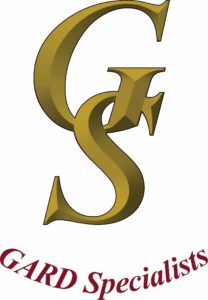BOMBARDIER 415
U.S. FOREST SERVICE
AS I SEE IT
TONY MORRIS
In 1988 our family moved from Santa Monica to a house in the Fernwood neighborhood of Topanga. Wildfires have burned in Topanga for centuries. Native American Chumash survived wildfires every year by relocating their settlements. Chumash burial sites are located in Topanga’s hills. In 1959 a wildfire destroyed 75 homes exactly where our house was built in 1963. The blackened stump of an oak tree burned by the 1959 wildfire remains in our backyard .
On the morning of November 3, 1993 a siren from Los Angeles County Fire Station 69 located a quarter mile from our house. I ran outside and looked to the north where a 3,000 foot cloud of smoke and ash was growing. The Old Topanga had started and would burn for eight days. Hot Santa Ana winds fanned the fire’s flames as it burned down Saddle Peak. We could feel the heat of hundred foot flames which burned to within 150 feet of our house. Firefighters from the northern California town of Alturas, parked in our neighbor’s driveway for three days, told us to evacuate immediately.
After the fire was extinguished I invited a group of neighbors to meet and share their experiences. Our discussion soon turned to firefighting aircraft. I knew about Bombardier’s CL-215 and the new turbo-prop CL-415. I contacted Bombardier in Montreal and asked if a representative could visit Topanga and provide us with information about the CL-415.
Bombardier Sales Manager, Bud Melges, journeyed to Topanga to meet with a group of Topangans. Bud showed a video of the CL-415, now named the Bombardier 415, and answered questions about the aircraft. We were introduced to the CL-415 and wanted to know why the water scooping air tanker was not available to fight wildfires in Los Angeles County.
Page (2) BOMBARDIER 415
An ad hoc citizens group was organized to pursue additional information about the CL-415. Bombardier provided literature about the aircraft and scale models of were distributed to non-profit groups in Topanga.
Former Los Angeles County Fire Chief P. Michael Freeman, with the support of the Los Angeles County Board of Supervisors entered into an agreement with the
Service Aerien Gouvernemental de Quebec, Quebec’s aerial firefighting service. An agreement was negotiated to lease two CL-415s from September 1st to December 1st,, at the height of the “wildfire season.” Los Angeles County has leased two Bombardiers every year starting in 1994.
Quebec I and Quebec II , the identification given to the Quebec CL-415s fly from Quebec to Van Nuys Tanker Base. As a reporter with the Topanga Messenger I often met with Quebec’s pilots to discuss their experiences flying the CL-415s in Los Angeles County.
Over the years the Messenger featured the CL-415 in a series of articles. I have rarely missed an opportunity to speak with fellow Topangans about the aircraft. Kathi and Pat Burke, owners of Pat’s Topanga Grill display two photos of the CL-415, one shows the aircraft scooping along a river and another is a remarkable photo of the CL-415 on a world tour flying under Tokyo harbor bridge.
In 1996 I journeyed to Sacramento to testify before a committee of the California Legislature in support of a bill to purchase two CL-415s. A representative of the California Department of Forestry (CDF), appearing before the committee, said that the CL-415 needed more study and furthermore: “ There are not enough water sources in the state for the aircraft.” To the right of the CDF representative was a large National Geographic map showing the state of California and the Pacific Ocean. A number of bills in the California Legislature have called for the purchase of CL-415s. Incumbent governors have vetoed the bills.
Page (3) BOMBARDIER 415
In 2001 Wildfire Research Network, a non-profit Foundation, produced Initial Attack 2001, a documentary produced with the citizens of Topanga, which focused on the need for CL-415s in California. The film has been exhibited widely and is posted on You Tube.
In 2010 I was fortunate to meet with the CL-415 pilots of the Securite Civile at
Marignane, France. A special PowerPoint featuring the operation of the Securite Civile’s CL-415 fleet was presented by the Chief Pilot of France’s 415 fleet at the Pelicandrome, the name given to the headquarters of the Aerial Firefighting fleet. An account of the deployment of six CL-415s to fight a ferocious wildfire threatening parts of Marseille was presented. France’s CL-415 pilots flew night and day dropping 1620 gallon loads of water on the fire. A compelling account of the aerial firefight was reported in Bombardier’s Initial Attack magazine.
U.S.FOREST SERVICE FIRE & AVIATION MANAGEMENT AWARDS FIVE YEAR
CONTRACT TO AERO FLITE FOR ONE BOMBARDIER 415
After 20 years the U.S. Forest Service Fire & Aviation Management has recently awarded a 5 year Exclusive Use Contract to Aero Flite, Kingman , Arizona for one Bombardier 415. In an exclusive interview with Tom Harbour, Fire & Aviation Management’s Director discusses the award.
1. As this is the first USFS Exclusive Use Contract for one Bombardier 415 will the Forest Service consider adding a line item to the Aero Flite contract for a second 415?
The contract allows for one additional CL-415 water scooper to be brought into service as “additional equipment.” Decisions about whether or not to do so will be based on fire managers evaluations of the operational effectiveness of the CL-415, need, and available funding.
Page (4)
2. Did the findings of the RAND Corporation report:”Air Attack Against Wildfires” calling for the deployment of Bombardier 415s play a role in the decision to award a contract to Aero Flite?
A vibrant fleet of firefighting aircraft includes a variety of capability. The agency has been working for several years to increase the number of water scoopers as it modernizes and configures the aerial firefighting fleet through actions such as funding two CL-215s for 100 days for each of the last two fire seasons through a shared exclusive use contract with the U.S. Department of the Interior. RAND’s emphasis on the role of water scoopers in the aerial firefighting fleet was based in part on critical and flawed assumptions about the costs of water scoopers and large airtankers. This is confirmed by the fact that the daily availability rate for the CL-415 is approximately twice the average daily availability rate for the Next Generation airtankers that were awarded contracts in June, 2013.
3. Will the Bombardier 415 be based at a California Air Tanker Base?
The aircraft will be moved to different locations based on current and predicted wildfire activity, similar to airtankers and helicopters.
4. Do you see the Bombardier 415 water scooper aircraft playing a more significant role in Forest Service Aerial Firefighting in the future?
Fixed wing water scoopers could be a more significant component of the U.S. Forest Service aerial firefighting fleet if the agency validates the operational capability of modern water scoopers, such as the CL-415, which is designed for the stress and strain of firefighting and can operate at higher elevations, fly faster, and carry more water than previous water scoopers. The U.S. Forest Service is a learning organization, always seeking the best capability available to support the firefighters on the ground.
AS I SEE IT , online column by Tony Morris is posted on www.airtanker.org the website of Associated Aerial Firefighters. Wildfire Research Network’s website: www.wildfireresearch.org For details call (310) 455-0798











Speak Your Mind
You must be logged in to post a comment.